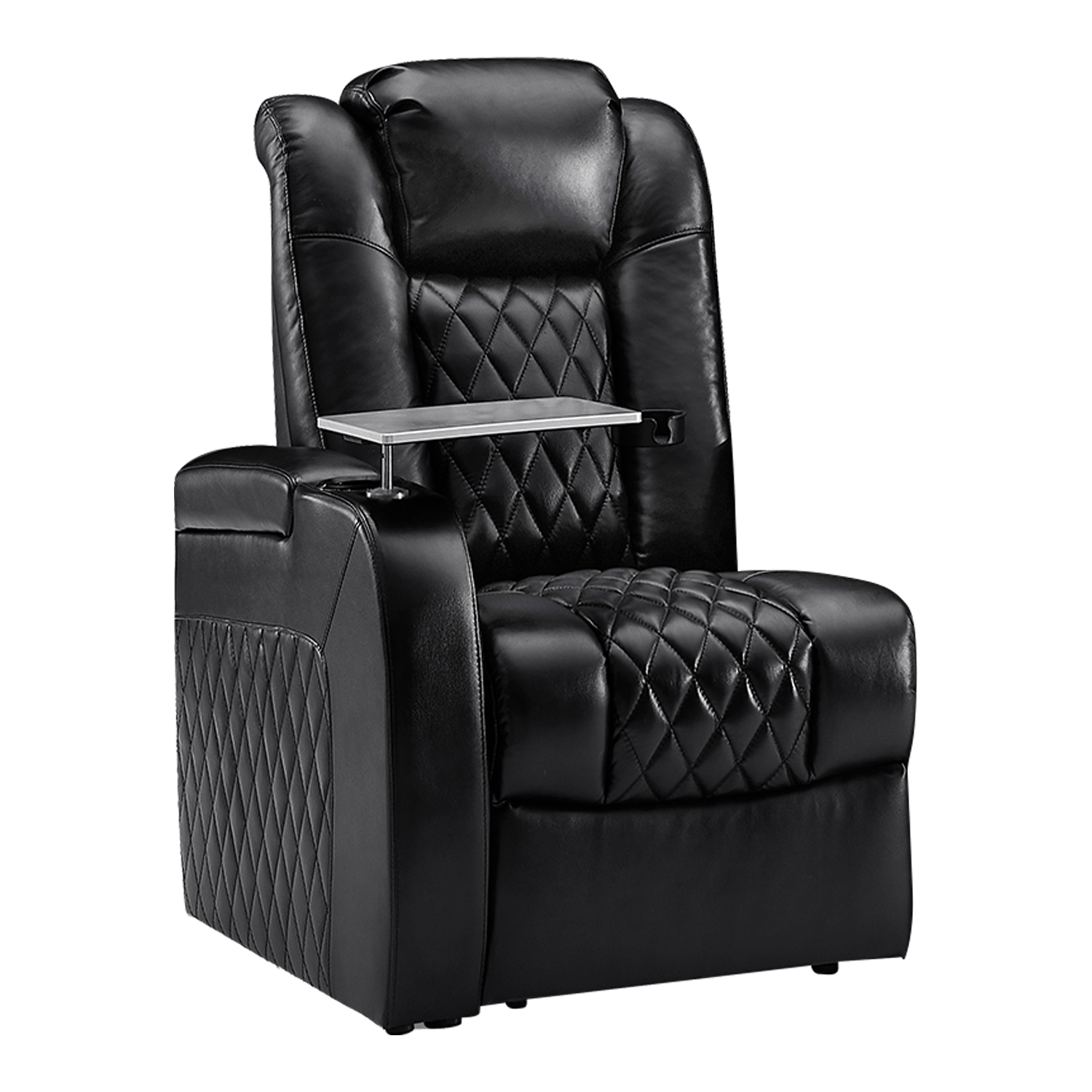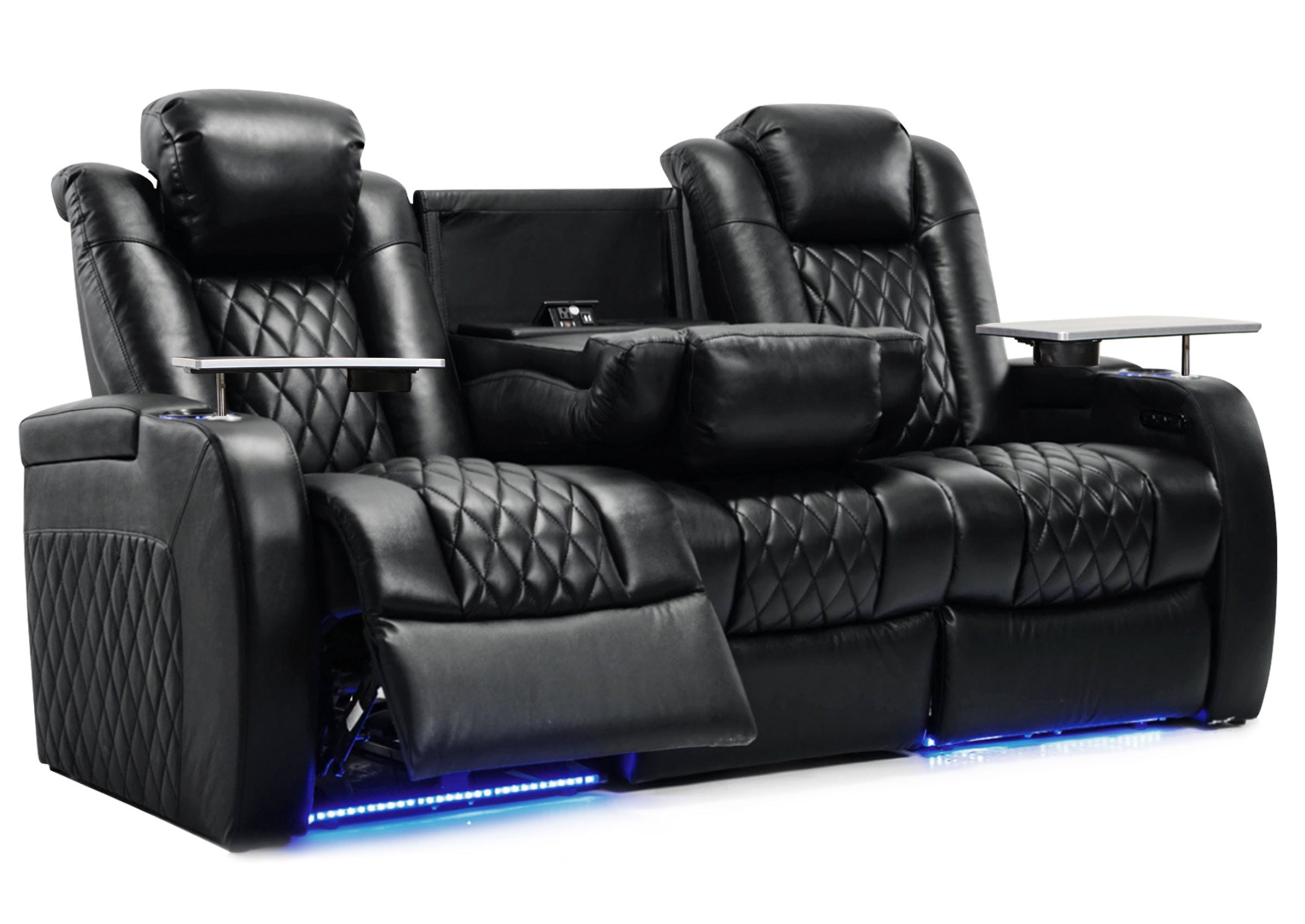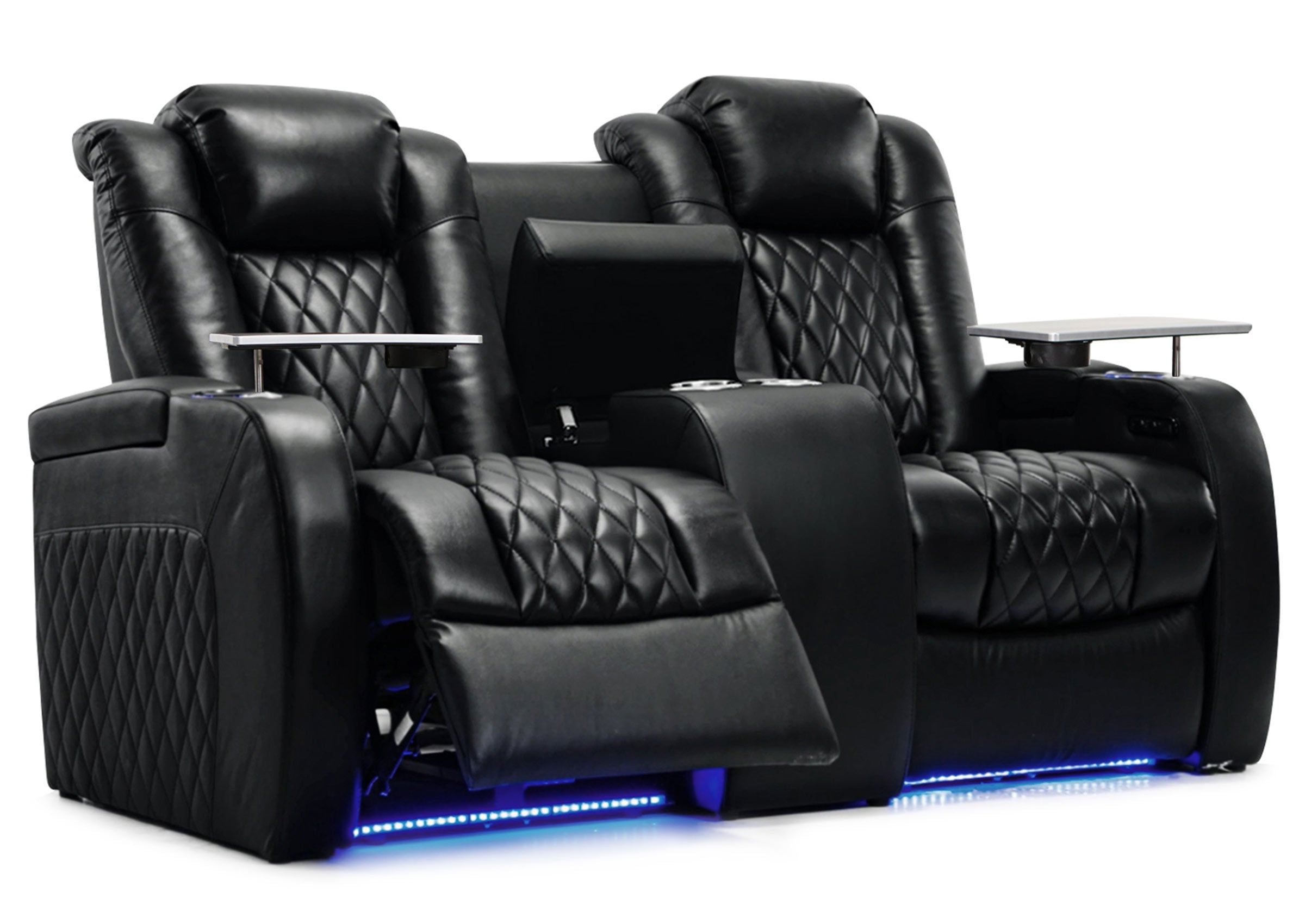A luxury home theater brings the cinematic experience into your living space. With custom-designed seating, a large screen, and immersive surround sound, you can enjoy movies in unparalleled comfort. Creating such a space might seem challenging, but it's achievable with the right approach. From selecting cutting-edge visual technology to installing state-of-the-art audio systems, each element contributes to a superior viewing experience.

How to Plan Your Luxury Home Theater
A well-planned luxury home theater transforms an ordinary room into a captivating entertainment space. Careful consideration of space, acoustics, design, and seating arrangements ensures an immersive cinematic experience.
1. Choosing the Ideal Space
The first step in creating your home theater is selecting the right location. Consider these factors:
- Size: Aim for a room at least 20 feet long by 13 feet wide for optimal viewing and sound quality.
- Shape: Rectangular rooms are preferable for better acoustics.
- Isolation: Choose a space away from noisy areas of your home.
Basements often make excellent home theaters due to their natural isolation and lack of windows. So converting the basement into a home theater is a good choice.However, any room can be transformed with proper planning.
2. Mastering Room Acoustics
Acoustics play a crucial role in your home theater experience. Poor acoustics can ruin even the most expensive sound system. Here are key points to consider:
- Soundproofing: Use materials like mass-loaded vinyl and acoustic caulk to prevent sound leakage.
- Sound absorption: Install acoustic panels on walls and ceilings to reduce echo and improve sound clarity.
- Bass traps: Place these in room corners to manage low-frequency sounds.
Professional acoustic treatment can significantly enhance your audio experience, making it worth the investment.
3. Designing for Cinematic Ambiance
The right interior design can transport you into the world of cinema. Consider these elements:
- Color scheme: Opt for dark, matte colors to reduce light reflection and enhance screen contrast.
- Lighting: Install dimmable LED lights or fiber optic star ceilings for a true theater feel.
- Wall decor: Use movie posters or custom artwork to add personality without compromising acoustics.
Every design choice should contribute to, not detract from, your viewing experience.
4. Arranging Comfortable Seating
Seating is where comfort meets function in your home theater. Here's how to get it right:
- Viewing angles: Position seats so that everyone has a clear, comfortable view of the screen.
- Tiered seating: If space allows, create stadium-style seating for unobstructed views.
- Distance from screen: Follow the THX recommended viewing distance of 1.5 times the screen width. To easily find the exact spot without doing the math, you can use a screen distance calculator.
Invest in high-quality, theater-style seats with features like reclining backs and cup holders for the ultimate viewing comfort.

How to Select the Perfect Display for Your Home Theater
The right display is crucial for a great home theater experience. Understanding your options and how to set them up will help you create an impressive viewing space.
1. Choosing Projectors or Large-Format Screens
Projectors offer a big screen experience, ideal for larger rooms. They provide flexibility in screen size and are great for that authentic cinema feel. When choosing a projector, look for high brightness (measured in lumens) and at least 4K resolution for sharp images. Laser projectors are the top choice, offering excellent color reproduction and long life.
Large TVs are better suited for smaller spaces or when you want the clearest picture possible. There are also ways to choose between OLED and QLED.OLED TVs provide the best contrast with deep blacks, while QLED TVs offer very bright images with vivid colors. The size you choose should fit your room dimensions and preferred seating distance.
2. Understanding Screen Materials
The screen material significantly affects image quality, especially for projectors. Screens with higher "gain" appear brighter but have a narrower viewing angle. If you plan to place speakers behind the screen, opt for a perforated, acoustically transparent material. For TVs in bright rooms, consider models with anti-glare coatings to reduce reflections.
3. Optimizing Picture Quality
After setting up your display, it needs to be adjusted for the best picture. Proper color calibration ensures images look natural, not overly bright or dull. Contrast should be set to show detail in both bright and dark areas. Sharpness should make the image clear without looking artificial. While you can adjust these settings yourself, a professional calibration service can help you achieve the best results.

4. Controlling Room Lighting
Managing light in your room is essential for optimal viewing. Use blackout curtains or shades, especially if you have a projector setup. Install dimmable lights that you can easily control. For TV setups, consider adding LED bias lighting behind the screen to reduce eye strain and improve perceived contrast.
How to Create Great Sound for Your Home Theater
Good sound is key to a great home theater. Here's how to set up an audio system that makes you feel like you're in the movie.
1. Setting Main Audio Parts
A home theater audio system has a few important parts:
- Receiver: This controls the whole system.
- Speakers: These produce the sound. You need several for surround sound.
- Subwoofer: This handles low, deep sounds like explosions.
2. Choosing Your Speakers
For a luxury home theater, go for multi-channel surround sound. A 5.1 system has five main speakers (two front, one center, two surround) and a subwoofer. Upgrade to a 7.1 setup for more immersion. Integrate Dolby Atmos, which adds overhead speakers. With precise placement of main, center, surround speakers, and subwoofer, it creates a 3D sound field, fully immersing you in movie audio.
3. Putting Your Speakers in Proper Place
Putting speakers in the right spots is important:
- Center speaker: Put this below or above your screen.
- Front speakers: Place these on either side of your screen.
- Surround speakers: These go to the sides and back of where you sit.
- Ceiling speakers (for Atmos): Install these above where you sit.
4. Making Your System Sound Its Best
After setting up, you need to adjust your system. Many receivers can do this automatically. For the best results, consider hiring a professional to fine-tune your system.
The room itself affects your sound. Adding special panels on the walls and corners can make the sound clearer and more natural.
With a well-chosen and properly set up audio system, your home theater can sound as good as or better than a real cinema.
How to Enhance Comfort and Style in Your Home Theater
Good seating and the right accessories can greatly improve your home theater experience.
Selecting Comfortable Theater Seats
Comfort is crucial for enjoying long movie sessions. Features like cup holders and storage compartments for remotes or snacks add convenience. Some high-end seats even offer USB ports for charging devices. As for materials, genuine leather is a popular choice for its luxurious look and durability. It ages beautifully, developing a unique patina over time, and can last for many years with proper care.
Optimal Seating Arrangement
The way you arrange your seats can significantly impact the viewing experience. Ensure that each seat has a clear view of the screen. If your room allows, consider setting up seats on different levels, similar to a real theater, for improved sightlines. Remember to leave enough space between rows so people can move in and out easily.
Essential Accessories for Your Theater
Several accessories can enhance your movie-watching experience. Dimmable lighting helps create the right atmosphere and reduces eye strain. A small snack bar area with a mini-fridge and microwave brings the cinema concession stand to your home. Sound panels on the walls can improve audio quality, while blackout curtains ensure optimal viewing conditions by blocking outside light.
User-Friendly Control Systems
Make your home theater easy to operate with a smart control system. A universal remote can simplify managing multiple devices. Alternatively, smartphone apps allow you to control your theater's functions from your phone. For the ultimate in convenience, consider a voice control system that lets you adjust settings hands-free.
Personal Touches and Decor
Add personality to your theater with carefully chosen decor. Movie posters of your favorite films can create a true cinema feel. You might theme your decor around a favorite movie genre or era of film. For a touch of magic, consider installing fiber optic lights in the ceiling to create a starry night effect.
Start Building Your Dream Theater
The essence of choosing a luxury home theater lies in leveraging cutting-edge tech for an unrivaled experience, customizing every detail to match your style, and ensuring long-term value with health-focused design and expandability. For enthusiasts of top-tier AV quality and lovers of life's finer moments, it's not just an entertainment setup. It's a taste-defining space that turns your home into an exclusive entertainment sanctuary.



































